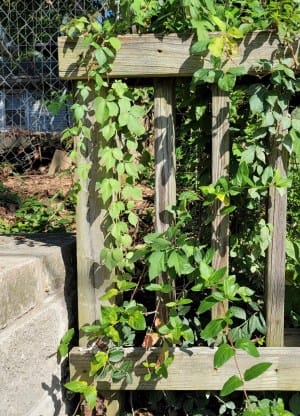No fine this time for poison ivy vine, says city of Bloomington

An appeal by B&L Rentals of a $50 fine imposed by the city of Bloomington for poison ivy and other plants growing taller than 8 inches did not need to be heard at Tuesday’s board of works meeting.

That’s because the notice of violation was converted into a warning.
As public works director Adam Wason explained for the public’s benefit, before the three-member board of works got into its regular agenda, “The board found that it was prudent to ask that that be turned into a warning instead of an actual notice of violation with a fine.”
Bloomington’s city code reads like this: “It is unlawful for the owner of any lot or tract of ground within the city to allow it to become overgrown with weeds, grass, or noxious plants beyond the height of eight inches or to such extent that the growth is detrimental to the public health and constitutes a nuisance.”
The notice of violation was issued by the housing and neighborhood development (HAND) department.
The appeal by B&L Rentals complained that no warning had been issued before the notice of violation was issued: “This seems like a warning, an email or a phone call, since I’ve worked with HAND for 20 years with no violation.”
The appeal continued, “This ivy is not near anyone, not hanging from a tree, or in a tree plot.”
The city staff’s case noted that city code does not require that a warning be issued.
The HAND department’s argument for not giving just a warning in this instance was the proximity to the sidewalk. “Given the particular hazards of poison ivy, and the location of the poison ivy immediately adjacent to a public sidewalk at a height where passersby could easily come into contact with it, a fine is appropriate under the circumstances.”
The issuance of a fine for poison ivy near a sidewalk came about five weeks after public commentary during late August budget hearings on the topic of the departmental responsibility for removal of vegetation like poison ivy from sidewalks. Clearing the sidewalk of vegetation is the responsibility of public works, while enforcement of the 8-inch rule is HAND’s responsibility.
About Tuesday’s appeal, Wason reported that “the property owner had taken care of the item right away after it was brought to their attention.” That formed part of the basis for the board’s decision to convert the notice of violation into a warning.
In March this year, a tenant who was noticed for failure to clear snow from a sidewalk was able to get the notice voided through their appeal, partly based on the lack of a warning.
That case involved a tenant who was unaware that the terms of their lease transferred responsibility for snow clearance from the landlord to the tenant. And according to at-the-time-interim HAND director, Brent Pierce, the tenant immediately bought a snow shovel and salt, and cleared the snow the day the ticket was issued—then sent in photos by email to document the effort.
Pierce said at the time that HAND has discretion in these matters. As Pierce put it: “Given the lack of notice and the prompt remedying of the violation, I voided the ticket.”




Comments ()